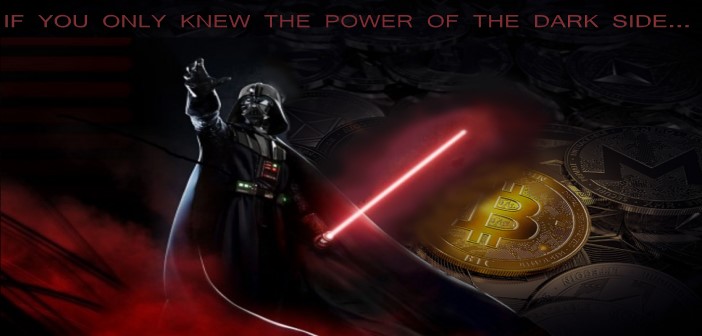Exploring the “dark side” of the cryptocurrency force.
The white paper published by Satoshi Nakamoto in 2008 changed the way we do business, introducing one of the first cryptocurrencies and a real use case for blockchain. However, behind the opportunities and hype there is still a question: how much do we trust a person with no name and face, which disappeared as suddenly as appeared, leaving no trails? This article is not meant to lower the merits of cryptocurrencies, but to wake up our awareness, if we really should put so much trust in it. Let’s imagine: what if the first cryptocurrency was created by a criminal?
They perfectly fit in the darknet concept, bringing it on the next level and giving a great protection to the criminals. The most known active darknet marketplaces as Dream, Wallstreet Market and Point are all accepting crypto. After the closure of Silk Road and Alphabay in 2017, darknet transactions using crypto dropped. But since 2018, according to the Crypto Crime Report, total darknet market sales grew 70% in 2019 to over 790 mil USD, doubling its share of overall incoming crypto transactions. The use of crypto in darknet is growing and impacts people’s lives worldwide.
One of the most painful outcomes were Paris attacks in November 2015, which terrorists allegedly financed using crypto. Ghost Security Group confirmed, that ISIS is „extensively using bitcoin for funding their operations“ being ”their prime form of cryptocurrency“. And Deutsche Welle informed already in September 2015, that ISIS experiments with digital currency. Since the first transaction in 2012, the anonymous supporters are sending donations to the wallets belonging to terrorists.
Presumptions about criminal origin of crypto are not new and many conspiracy theories and investigations were raised since 2008. One was presented by Evan Ratliff who believes, that bitcoin creator was Paul LeRoux, a South African programmer, drug and arms dealer. Back in 1990s he wrote an software E4M, similar to the bitcoin encryption idea, and launched a website with an open source code, answering the users questions; the creation of bitcoin by Satoshi later mirrored this approach. His writing style and anti-government economic ideas, interest in creating an online currency which cannot be controlled, strong server’ encryptions and hiding his identity by using fake IDs (one issued on name “Paul Solotshi Le Roux”), brought Ratliff to a link between Satoshi and Solotshi-LeRoux. Last proven mail from Satoshi was in 2011, after Andresen mentioned his plans of explaining bitcoin to CIA, Satoshi stopped responding for good. LeRoux, by that time haunted by CIA and arrested in 2012, (still remains in custody) would obviously be scared of this fact. This could also explain why Satoshi hadn’t move his 1 mil bitcoins since 2009, worth 12 mil USD in 2012. Though comparison between the E4M code and original bitcoin software could not either prove nor deny LeRoux’ authorship, it still could be written by the same person with a style changed over a decade. There is also no trace of LeRoux on bitcoin forum or him using the Satoshi’s email servers or IP address.
Whether cryptocurrency was created by a “dark side” or not, it’s still widely used by criminals. Yet we should remember, that in most cases technology is neutral and it depends on how we use it. By being aware of its power, we will be prepared for the challenges on how it can be misused.
